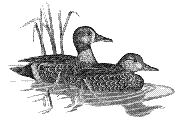US Fish & Wildlife Service
Date of this Version
January 1989
Abstract
Phragmites, or common reed, is a perennial grass often associated with wetlands. When phragmites is interspersed with open water or with other vegetation, waterbirds and small mammals find cover among the stems. Its dense root systems strengthen dikes and roads. On many sites, however, this robust emergent forms monotypic, impenetrable stands having little value for waterfowl. Ducks occasionally nest on the edges of large stands, but avoid the dense interior.
Phragmites is native to North America and is found worldwide, primarily in lowland temperate regions. Phragmites can occupy upland sites with seeps, or grow in brackish or fresh water several feet deep. Large monocultures are usually associated with impounded areas and resultant stabilized water regimes. Such sites, having levees or water-control structures that keep large areas moist for long periods, create ideal situations for phragmites to become a problem. The plants are less competitive when there is variation in water levels among wet and dry seasons and years. Growth is often stunted where soil fertility is extremely high or low or where salinity is high. Phragmites usually establishes itself on dry borders of marshes, but frequently invades shallow water foraging sites by out-competing and subsequently replacing more desirable emergent plants.
Because waterfowl benefit from interspersion of phragmites with other plant species and water, we do not recommend eradication of this plant from wetlands. Instead, phragmites should be controlled only to the degree necessary to achieve management objectives. By understanding the ecology and life history of phragmites, such control is more easily achieved.



Comments
Published in Diana H. Cross and Paul Vohs (eds.) Waterfowl Management Handbook. Fort Collins, CO: U.S. Fish and Wildlife Service, 1988. Online at http://www.nwrc.usgs.gov/wdb/pub/wmh/contents.html